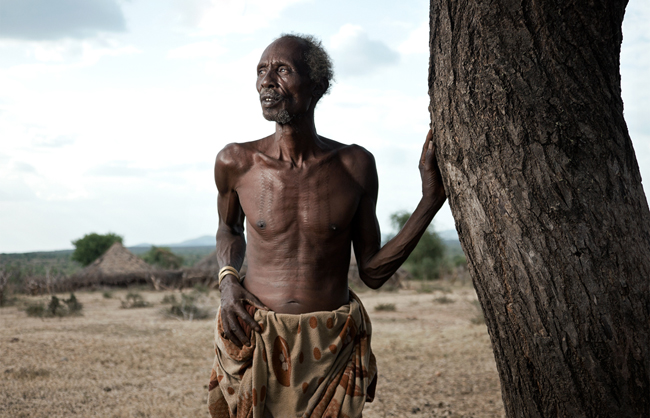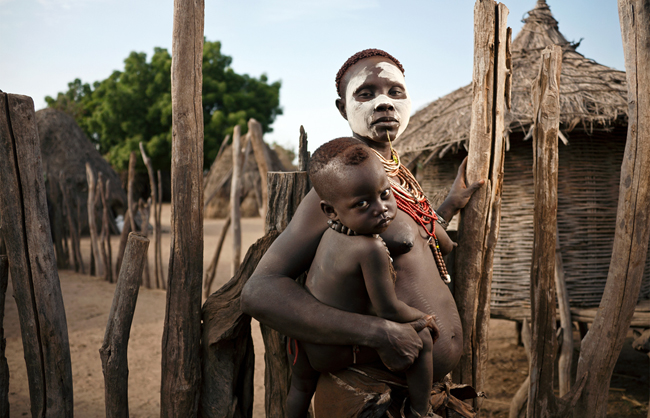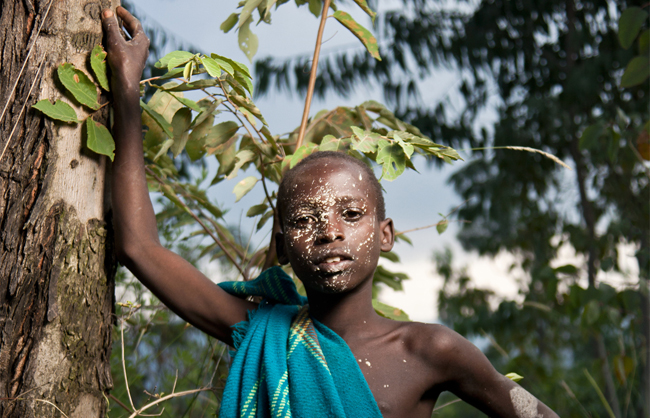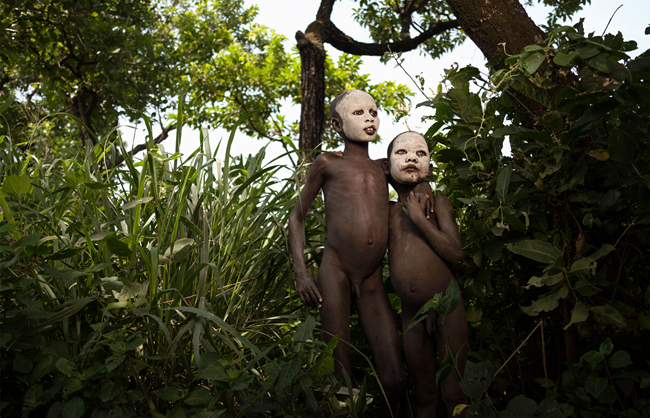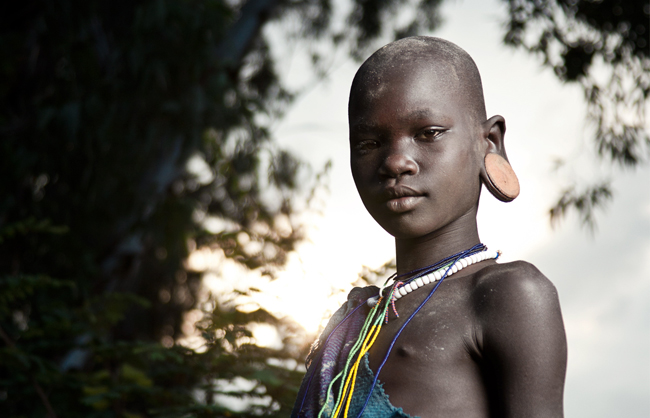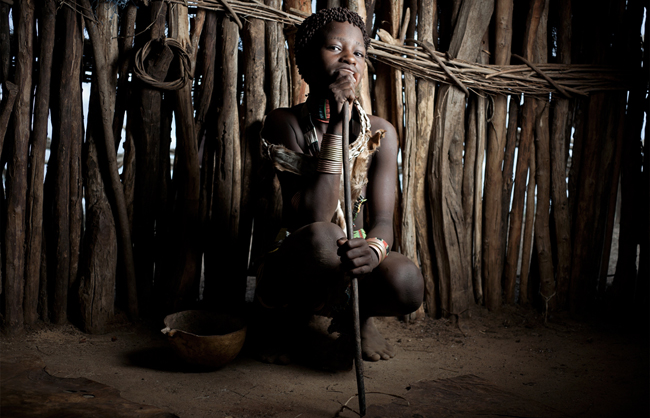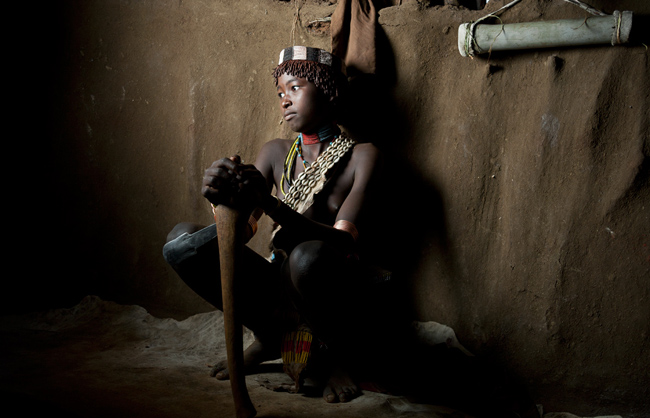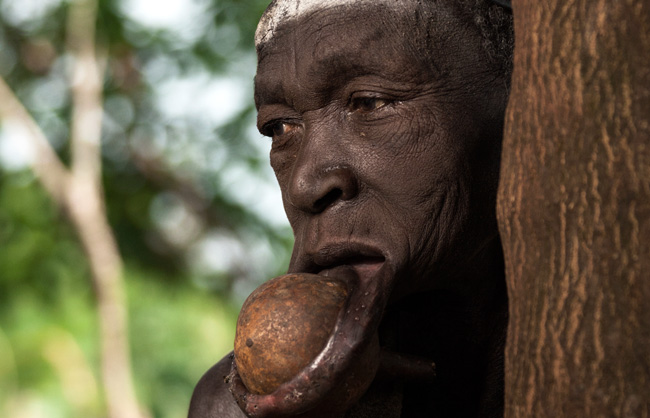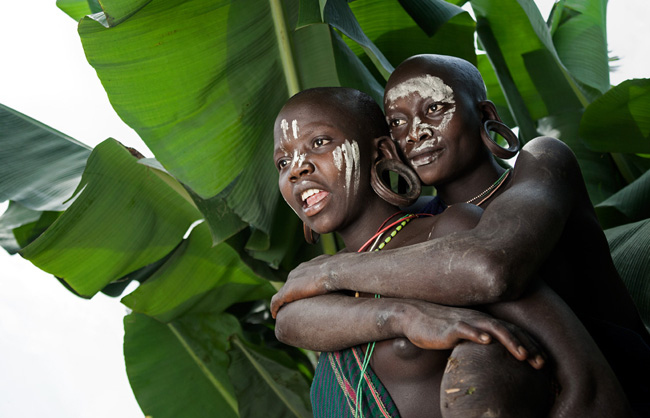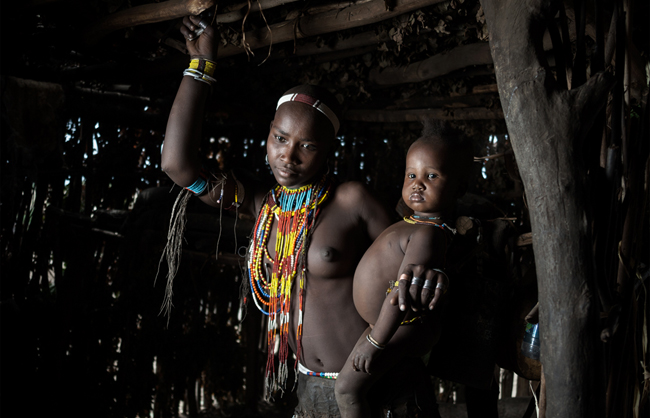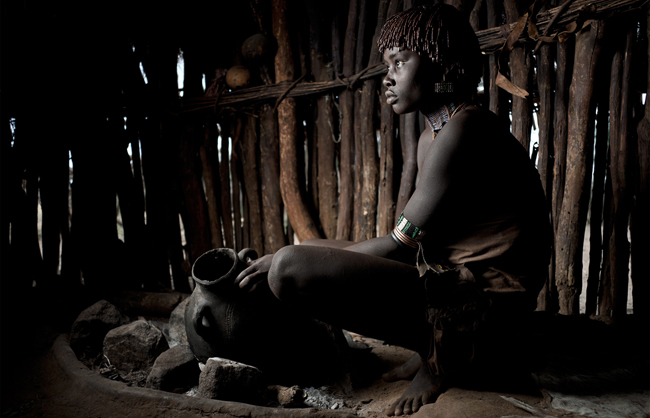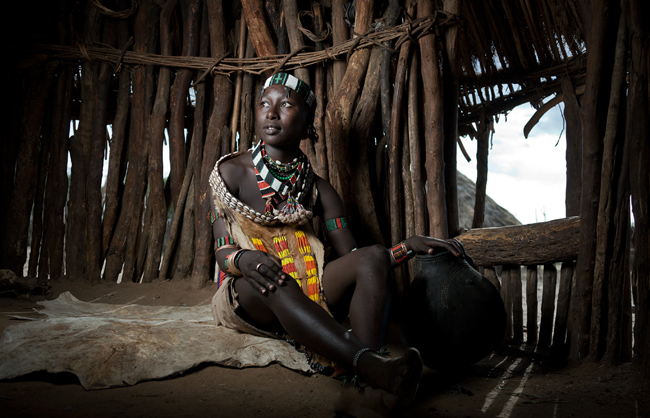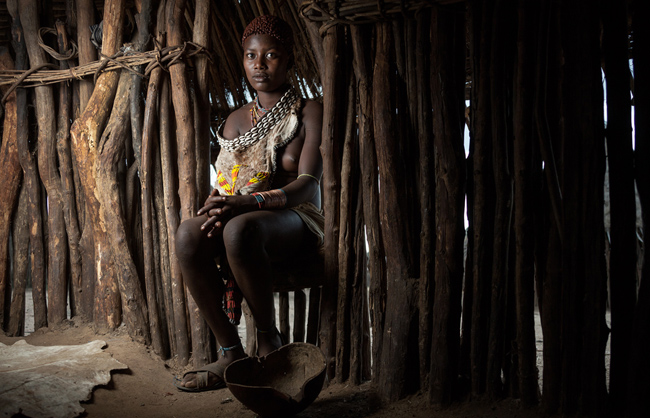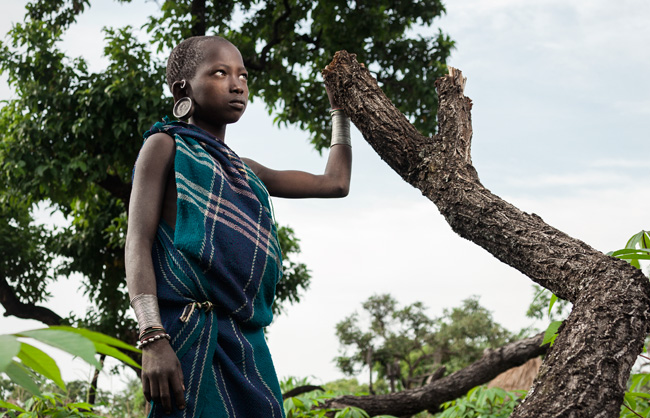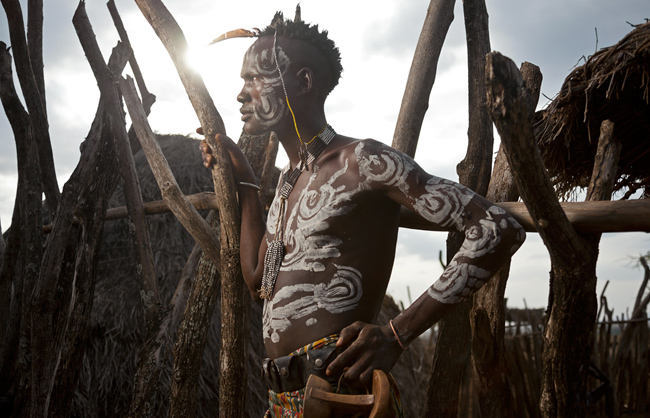Ethiopia
Omo Valley
Omo Valley
Where: Ethiopia
When: 2013
The Omo Valley is located at the border with Kenya to the south, South Sudan to the west, the Ethiopian region of Gambela to the northwest and the Oromo district to the north and east.
It is currently considered by some to have been for thousands of years one of the largest migratory crossroads of different cultures and ethnic groups. Several hominid fossils and quartzite tools have been excavated in the region, the oldest of which date back to about 2.4 million years ago.
To this day, the Omo valley is famous for its diversity of tribes that lived there for centuries. It is estimated that the Omo valley is actually a home to over 200.000 tribal people. At least 12 distinct ethnic groups occupy this area such as the Arbore, Ari, Bena, Bodi, Nyangatom (Bume), Daasanech (Galeb), Dorze, Hamer, Karo, Konso, Mursi and Surma (Suri).
Most of these tribes are semi-nomadic, agro-pastoralists and speak Nilotic languages. They mostly live along the Omo river and depend on it for their survival. They have developed complex socio-economic and ecological practices intricately adapted to the harsh and often unpredictable conditions of the region’s semi-arid climate.
The annual flooding of the Omo River feeds the fertile plains and the rich biodiversity of the region and ensures the food security of the tribes, especially as rainfall is low and erratic.
People depend on it to practice agriculture using the rich silt left along the river banks after the rainy season and mainly cultivate sorghum and maize. Some tribes also practice hunting and fishing.
Cattle, goats and sheep are vital to most tribes’ livelihood production of milk, meat, blood and hides. Cattle are highly valued and reflect the wealth of a family or a clan. They are an important defense against starvation when rainfall and crops are not abundant enough. At certain moment of the year, families travel to temporary camps to provide new grazing for their herds, surviving only with the milk and blood from their cattle.
Some other tribes live further from the river but a network of inter-ethnic alliances allows them to access the flood plains, especially in times of scarcity.
Despite this cooperation, there are many conflicts as tribes compete for natural resources.
Cattle herding and agriculture have been for a long time the mainstays of the Omo valley’s tribes. But more than 20 years ago, when the country opened itself to tourism, the Ethiopian government understood that these tribes could be an easy tourists attraction. A flow of tour operators started to arrive in the region and visit those who were previously almost untouched by external world. This contact changed slowly the tribal way of life and, instead of farming and cattle herding, people understood that their culture and their unique appearance (ochre-skinned, their lip-plated and the painted body for example) could be an easy source of earning. Even if some of these tribes are still relatively preserved due to the difficulty of access to their land, most of these indigenous peoples became an exotic objects to be enjoyed as part of the scenery exploited by tour operators and the government. They are expected to perform tribal dances and parades for the tourists. Devoid of their ceremonial content, these aspects of their indigenous culture are trivialized and become devalued and devoid of meaning. Handicrafts, body painting, scarification and other customs, which were once produced for particular uses, have turned into tourist scenography.
At the same time, because of the highlighting of these tribes, the Protestant Christian missionaries arrived in this region and started to convert people. These conversions did not really change their way of life but had a strong impact on the ancient tribal beliefs and myths.
Also, At the end of 2006, the Ethiopian government started the construction of a massive hydro-electric dam, Gibe III. Hundreds of kilometers of irrigation canals were built and diverted the waters originally intended for indigenous peoples' plantations.
The construction of this dam has catastrophic consequences for this fragile environment and the livestyle of the Omo valley’s tribes, which are closely linked to the river and its annual floods. Not to mention that they already are living in extremely difficult conditions in this challenging area. In 2011, the government began to lease out vast blocks of fertile land in the region to foreign companies to plant biofuels and other highly water-intensive crops such as oil palm, cotton and maize. This process started to take away more and more land and expel tribal people from their land in order to make a way for the large commercial plantations. Many communities’ grain stores, beehives and valuable cattle grazing lands have been destroyed.
According to independent experts, the dam, commercial plantations and irrigation canals will have an enormous impact on the delicate ecosystem of the region by altering the seasonal flooding of the Omo River and dramatically reducing its downstream volume. If the natural floods and its rich silt deposits disappears, subsistence agriculture will collapse, causing food shortages for at least 100.000 people. Inter-ethnic conflicts will increase as people will compete more for scarce and dwindling resources.
If the tribes currently living in the Omo valley will leave their traditional land and their culture, they will be able to survive materially in a new environment, but probably not spiritually as they will no longer have access to their natural environment for the transmission of their identity.
It is to be hoped that the exposure which the tribes are experiencing now will turn to be an advantage for them. To be highlighted by tourists, photographers and tour operators might give them media exposure and an international voice that will help to fight for their lifestyles, customs, environment and the central core of their culture in this process of disintegration.

